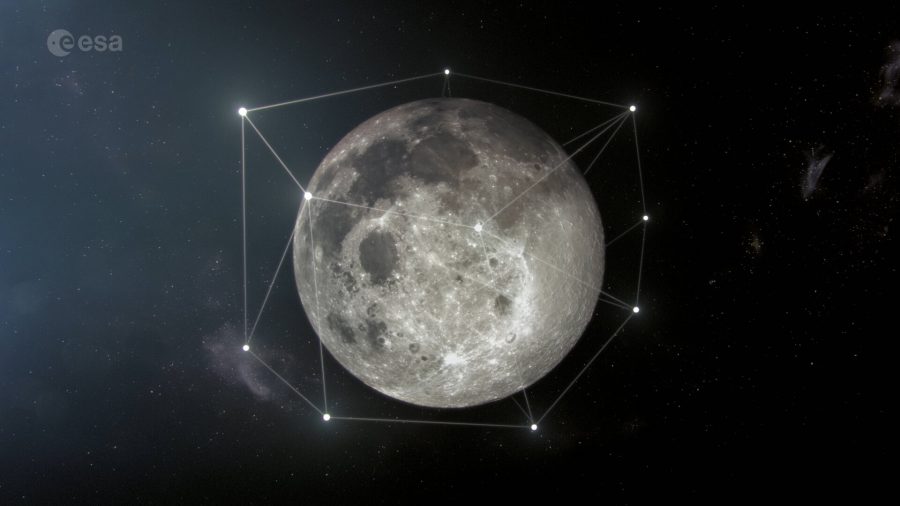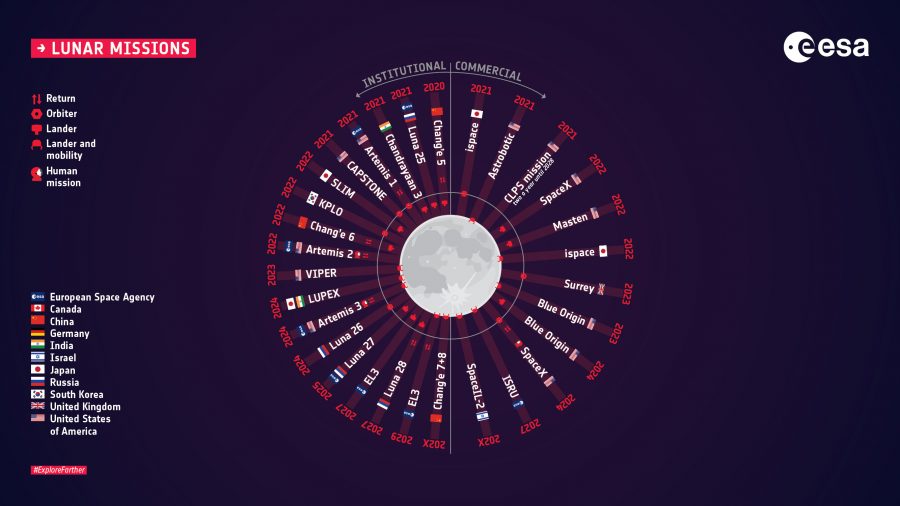The European Space Agency’s Moonlight initiative gets the go ahead for the development of a future GPS system around the Moon.

ESA
The Moon is about to become a busy place. Over the next few years, an international fleet of orbiters, smallsats, rovers, and eventually crewed missions are set to explore the Moon. And the European Space Agency (ESA) thinks all of those missions could benefit from an independent satellite network.
Apollo-era missions only had line-of-sight communications with Earth, which restricted landings to the equatorial to mid-latitudes on the lunar nearside. But now the ESA has announced its “Moonlight” initiative, in which two consortia of companies — led by Surrey Satellite Technology and Telespazio — will explore the concept of placing a permanent satellite network around the Moon. The network would provide an independent navigation system, giving rovers and crewed missions alike more autonomy to access the Moon's entire surface, including the polar regions and the lunar farside.
“Reaching the Moon is the first step,” says Elodie Viau (ECSAT / ESA) in a recent announcement. “Staying on the Moon is what comes next.”
Ultimately, the ESA envisions Moonlight as a means to open up the Moon to commercial enterprises as well as lower the entry ticket to smaller nations and private smallsat missions. If a nation or corporation wants to field a mission on or around the Moon in the future, access to a communications network will already be in place and available.
“We’re proud of supporting the UK’s and EU’s position on the global scene,” says Phil Brownnett (Surrey Satellite Technology), “and we’re proud to be part of this fantastic effort to establish a sustainable presence on the Moon.”

ESA / ATG Media Lab
To this end, the ESA already has several related projects in development. One is the European System Providing Refueling Infrastructure and Telecommunications (ESPIRIT) module, which is planned for the Lunar Gateway platform, expected to be in orbit around the Moon by 2024 at the earliest.
Another upcoming mission is the Lunar Pathfinder, which will demonstrate communications technology in lunar orbit. It's already in development and set to launch in 2024. Pathfinder will also feature a space weather–detection component to characterize the lunar environment for future orbiters. China launched its own similar Queqiao relay in 2018 to carry out the Chang’e 4 mission on the lunar farside.

ESA
The Lunar Pathfinder will provide a proof of concept for the full-fledged Moonlight constellation, which might be made up of three or four satellites in lunar orbit, plus on-orbit spares. The satellites will provide navigation information that should eventually reach the 1-meter accuracy currently seen in the ESA’s Galileo navigation network around Earth. The system would support lunar development and even economic activity at the Moon.
The United Nations is also currently working to set standards for GPS systems around the Earth, and this standardization will likely extend to Moon-based systems as well.
The current timeline would see the Moonlight consortia present their feasibility study to the ESA in 2022 and start development in 2023, with the goal of fielding the constellation over the next four to five years.
The ESA’s other contributions to NASA’s Artemis initiative to return humans to the Moon include partnership on the Lunar Gateway, building the European Space Module component for the Orion spacecraft for deep space exploration, and developing the European Large Logistic Lander for lunar mission resupply.

ESA
Future Moon Missions to Watch
The very first batch of lunar missions are set to head moonward this summer, with NASA’s CAPSTONE orbiter set for launch from NASA Wallops on a Rocket Lab Electron rocket in June, followed by Astrobotics Peregrine Mission One in late 2021 and Intuitive Machines’ Mission One in early 2022, both under NASA's Commercial Lunar Payload Services (CLPS) program. The first uncrewed flight of the SLS from the Kennedy Space Center is set for November 4, 2021.
We may soon be back on the Moon to stay, and ESA’s Moonlight network could help pave the way.
 1
1
Comments
Andrew James
May 24, 2021 at 5:19 am
We need a International approach to this and not petty nationalistic goals. The 'final frontier' is 'final' for a reason - it's the last opportunity for humankind to work together for our species survival. I dispair for our collective future. [ESA be damned.]
You must be logged in to post a comment.
You must be logged in to post a comment.